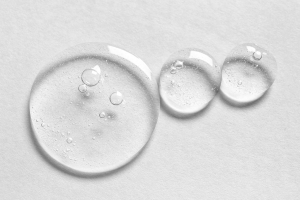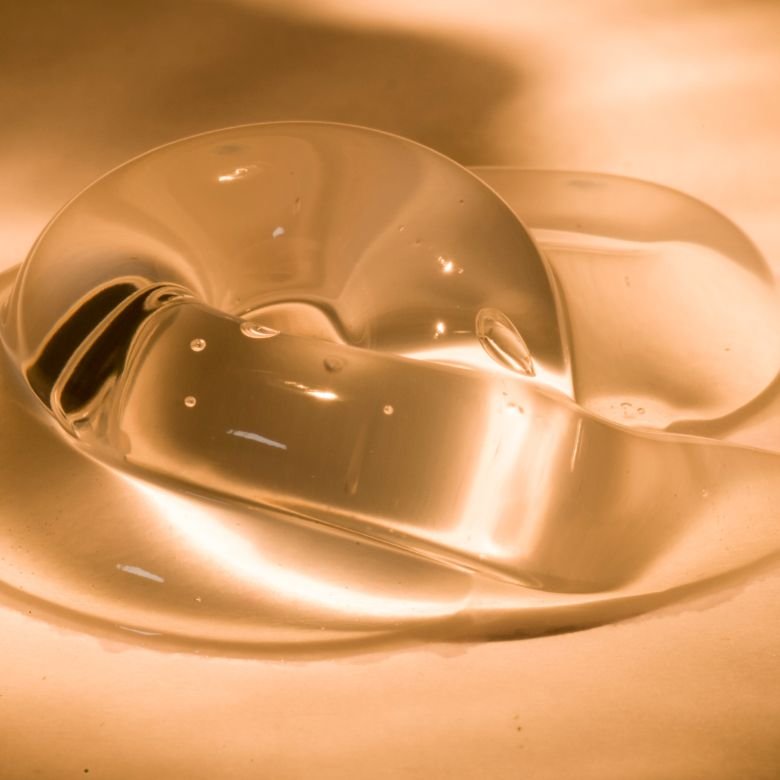Colloidal systems are mixtures that are non-homogeneous from both physical and chemical points of view. They are characterised by a specific degree of phase fragmentation, and it is crucial that one of phases is dispersed in the other. The dispersed phase is present in very small amounts compared to the other phase, which constitutes a dispersion medium that is continuous. Both phases can be in any state of matter. A system can be defined as a colloid if the dimensions of the dispersed phase range from 1 to 100 nm. A colloidal system with uniform particle diameters is called a monodisperse system. However, most systems found in nature are polydisperse, which means that their particles have various diameters.

Classification of colloids
There are several classifications of colloidal systems, namely:
- by the physical state of the dispersion medium,
- by the type of the continuous phase,
- by the affinity of the colloid to the dispersed phase,
- by the structure of the colloid,
- by the reversibility of the coagulation.
Classification of colloids by the physical state of the dispersion medium
| Dispersion medium | Dispersed phase | Name | Example |
| Solid | Solid | Solid sol | Alloy (steel) |
| Solid | Liquid | Solid emulsion | Butter |
| Solid | Gas | Solid foam | Styrofoam |
| Liquid | Solid | Sol, gel | Mud |
| Liquid | Liquid | Emulsion | Milk |
| Liquid | Gas | Foam | Whipped cream |
| Gas | Liquid | Liquid aerosol | Dust |
| Gas | Solid | Solid aerosol | Smog |
Table 1 Classification of colloids by the physical state of the dispersion medium.
In addition, liquid continuous phases can also be classified by their nature. A colloidal system with water as the dispersion medium is called a hydrosol. If the dispersion medium is an organic liquid, the colloidal system is called an organosol. This is also directly related to the classification of colloids based on the affinity of the solvent:
- Lyophilic colloids are such colloids that are characterised by affinity to the solvent. They are strongly solvated in it (or hydrated in water), they are stable and less sensitive to coagulation factors of any type.
- On the other hand, lyophobic colloids show no affinity to the continuous phase. This is why they undergo no or only limited solvation.
Where the continuous phase is water, such lyophobic colloids are referred to as hydrophobic. They are not undergo hydration, but ions from the solution adsorb on their surfaces. In polar solvents, they are not stable without an emulsifier. Examples of such systems include milk or mayonnaise. Hydrophilic colloids, in which macromolecule hydrophilic groups maintain these molecules suspended in water, include proteins, gelatin, or jellies.
Classification by colloid structure
- Molecular colloids, also called eucolloids, are formed by the molecules of compounds (proteins, rubber, starch) dispersed in the continuous phase. Solvent molecules can penetrate macromolecules, which makes the interface unclear. These are colloids that do not necessarily have an electric charge.
- Phase colloids, which are formed when around the molecules of some chemical compounds, such as AgCl, Fe(OH)3, gathers a certain number of atoms or molecules, producing aggregates of the same size as the colloidal molecules which form a separate phase. Such colloids have an electric charge on their surfaces; they include sols of gold, silver, or metal oxides.
- Association colloids (called micelles) are built of associated molecules that form a bigger particle, as in the case of sodium dodecyl sulphate (SDS).
Classification of colloids by the reversibility of the coagulation
Coagulation is a process where individual particles of the dispersed substance combine to form larger clusters called aggregates. Then they precipitate from the system in the form of a sediment. Therefore, coagulation destroys the colloidal system by separating the dispersed phase in the form of large clusters of sediment or drops of liquid. Based on whether that process is reversible, we classify colloids into such where the coagulation is:
- irreversible, where the sol cannot restore its original state once converted into a coagulate. This is a result of the neutralisation of the surface electric charge. An example of such process is the temperature induced denaturation of protein colloids, which destroys their secondary, tertiary, and quaternary structures.
- reversible, where colloids converted into a coagulate can be subject to peptisation, which converts them back into a sol. In such cases, the coagulation results from the removal of the solvation shell that surrounds the colloid. An example of such a process can be the coagulation of the hen egg white, which can return to the form of sol after adding sodium chloride to it and diluting it in water.

Factors affecting the stability of a colloid
- Size of the dispersed particle: smaller particles normally show higher stability.
- The presence of a surface electric charge.
- The presence of solvation shell (for hydrophilic colloids).
Kinetic properties of colloidal systems
- Brownian motions, which are chaotic movements of the dispersed phase molecules in a liquid or gaseous continuous phase. They are caused by the collisions of colloid molecules with the dispersion medium.
- Diffusion, which is a characteristic of colloid molecules that move from a region of a higher concentration to one of a lower concentration. The speed of that process is low, as the particles are large in size.
- Sedimentation, which is the effect of gravity acting on the colloid molecules, causing them to fall to the bottom of the vessel. This process proceeds slowly, and it can used for determining the molecular mass of macromolecules.
Optical properties of colloids
Unlike in true solutions, particles in liquid colloidal systems are large enough to scatter visible light. This occurs when the refractive indices of the medium and of the dispersed phase are different. The key factors for scattering are the diffraction and reflection. The scattering occurs evenly in each direction.
Electrical properties of colloids
- Electrokinetic potential, which arises from the difference in potential between the stationary diffusion layer of the dispersed phase particles and the dispersed phase. It is the potential at the surface of dispersed particles and has a great impact on the stability of colloidal systems.
- Electrophoresis, or actually “electrophoretic mobility”, is another characteristic of colloids. It is affected by such factors as the shape and size of the molecule, pH value, the applied electric field strength, or temperature.
- Electro-osmosis refers to another possible motion of the liquid phase of a colloidal system in a unitary electric field. Its speed is directly proportional to the electrokinetic potential and inversely proportional to the viscosity of the system.
- Streaming potential, which is caused by a mechanically induced flow of a liquid through a system of capillary tubes or a membrane. This entails a difference in potentials.
- Sedimentation potential, which is caused by the motion of charged colloidal particles in relation to the dispersion medium, for example under the influence of gravity force.
